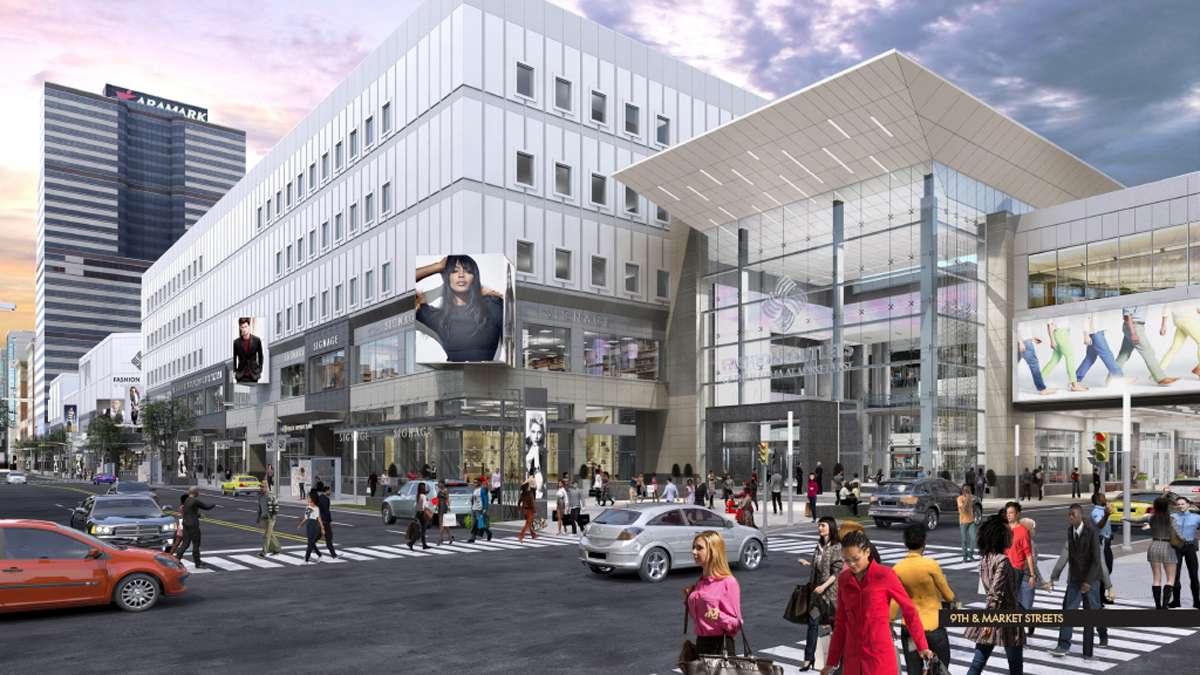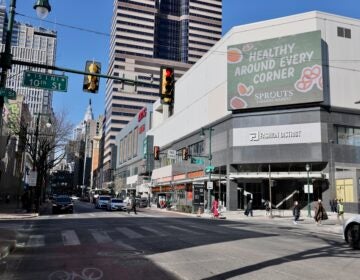SRC approves $55 million tax incentive for Gallery mall redevelopment

Philadelphia’s School Reform Commission voted on Thursday night to approve a tax-increment financing district for the area surrounding the Gallery mall on east Market Street that would save the mall’s owners $55 million in property taxes over a period of 20 years.
The TIF district is intended help finance the redevelopment of the mall, plans for which were detailed in an Inquirer article earlier this week. The incentive package, put together by city officials and the Philadelphia Industrial Development Corporation, requires the approval of both the SRC and City Council. Councilman Mark Squilla, whose district includes Market East, said he would introduce a bill authorizing the TIF next week.
The SRC voted unanimously to approve the incentive after a presentation from Deputy Mayor Alan Greenberger and PIDC President John Grady. The TIF would freeze the Gallery’s liability for property and other taxes in the area surrounded by 8th, 11th, Market and Filbert streets until 2036. During that time, the property owners would continue to pay the city its current yearly tax bill of around $1.6 million, and the School District’s portion of that revenue would stay the same.
Grady said that after the TIF is over, the yearly tax bill would rise to around $11.4 million. During the life of the TIF, the property would continue to send increased revenue from use-and-occupancy and liquor-by-the-drink taxes to the city and school district, totaling an estimated $94 million over 20 years, according to Grady.
Tax-increment financing works by allowing developers to divert the increasing taxes on properties they’re building back to the cost of the project. Councilman Wilson Goode, Jr., has compared the program to allowing a homeowner to keep his taxes in order to pay his mortgage.
There are 14 TIF districts in Philadelphia, the most recent of which was awarded for the W Hotel under construction at 15th and Chestnut streets in Center City. PIDC is required to prepare an estimate of yearly tax increases for the 20-year period of each TIF. A PlanPhilly analysis found that those projections tend to be overly optimistic. Over a six-year period, the city’s TIF districts earned $20 million less than projected for the same period.
The city and schools technically don’t take on any risk if TIF districts underperform. If the properties fail to live up to expectations, the developers are on the hook for the balance of the loans they borrow against the TIF.
By agreeing to participate in a TIF, the school district does lose out on any increased property-tax revenue that would otherwise be collected for 20 years. Developers and officials justify that cost by saying that development projects that take advantage of the program couldn’t be built without it.
PlanPhilly asked Deputy Mayor Alan Greenberger Thursday night why the city chose to create a TIF for the Gallery project rather than using other development incentives.
“There are no other economic-development tools of this scale,” Greenberger said.
The ten-year property-tax abatement, which can be claimed by anyone who pulls permits to build or repair property in the city, would provide only half the value of the TIF, Greenberger said.
In addition to the TIF district, the city is committing an additional $58 million in incentives for the Gallery’s redevelopment. The state has already committed $15.5 million for the project, according to Greenberger, and the owners have requested an additional $20 million from the state. The project is projected to cost $575 million.
WHYY is your source for fact-based, in-depth journalism and information. As a nonprofit organization, we rely on financial support from readers like you. Please give today.






